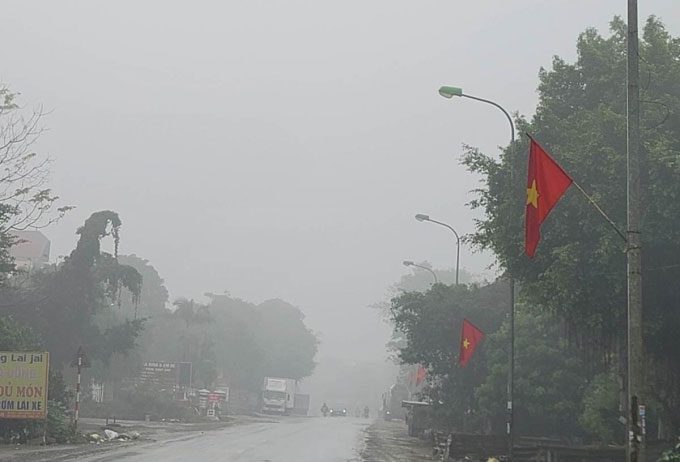In the upcoming two weeks, northern Vietnam will frequently experience drizzling rain and fog, with humidity levels exceeding 80%. Walls and fences will “sweat,” making surfaces slippery.
Influenced by a cold air mass shifting eastward and a strong westerly wind at high altitudes, northern Vietnam is transitioning from dry weather to drizzling rain and humidity starting today. The humidity level above 80% causes moisture to condense on walls, floors, and furniture. Nighttime temperatures will rise by about 4-5 degrees compared to three days ago, reaching around 18 degrees Celsius; daytime temperatures will be between 22-24 degrees, with the Điện Biên valley reaching 29 degrees Celsius.

Dense fog in Hanoi, morning of February 3. (Photo: Gia Chính)
The humid conditions typically arise after the Lunar New Year and before the beginning of spring. This type of weather promotes vigorous plant growth but can disrupt daily life. Laundry does not dry, and roads become muddy. In the early morning, thick fog limits visibility, necessitating vehicles to turn on yellow lights.
The National Center for Hydro-Meteorological Forecasting predicts that in the first half of February, the cold air will weaken and shift eastward, resulting in light rain, drizzle, and fog in northern regions as well as Thanh Hóa and Nghệ An during the night and morning. In the latter half of the month, stronger cold air will push temperatures in mountainous and midland areas down, potentially leading to severe cold conditions, with average daytime temperatures dropping below 15 degrees Celsius.
According to Accuweather, Hanoi is expected to experience persistent fog and drizzle throughout February. The weather will only be dry for 2-3 days when cold air arrives. Temperatures in Hanoi will range from 18-21 degrees in the coming week, increasing to 19-23 degrees Celsius the following week. Areas above 1,500 meters above sea level, such as Sapa (Lào Cai), will see temperatures fluctuate between 12-18 degrees Celsius.


















































